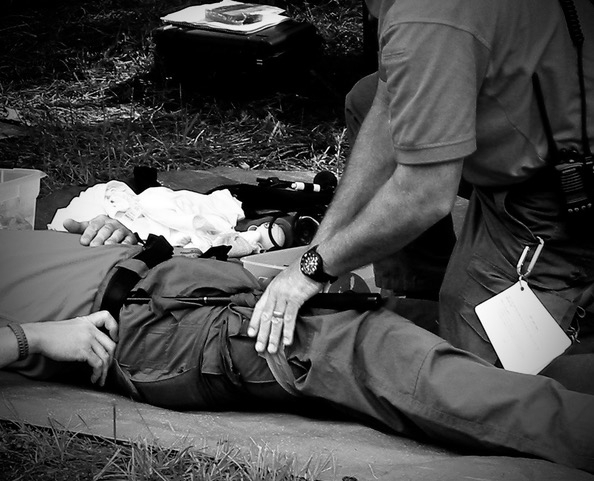First Look: Bond Arms Rough Series Double-Barrel Handguns
by SI Staff - Tuesday, March 10, 2020
Bond Arms has trimmed down its finishing process to create a more affordable option for their more budget-conscious customers, while still retaining the outstanding fit and finish they are known for. The result of this is the Rough Series and includes the Roughneck, Rowdy, and the newest addition, the Grizzly double-barrel guns.
Every Rough Series gun is cleaned up and de-burred to reduce the sharp edges off the metal. After the initial treatment, guns are bead blasted to give them a rough finish, and the parting lines in the metal frame and trigger guard add to their appeal. The swirls of the tool marks on the barrels and tiny marks left from the casting add a unique individual touch to each handgun. Built in a fraction of the time compared to the rest of the Bond Arms line, the reduced build cost of the Rough Series guns translates into huge savings for the consumer, yet still use the same grade of stainless steel as all other production models.
The Bond Rough Series handguns include premium features found in the rest of their double-barrelled guns, such as stainless-steel barrels and frames, a cross-bolt safety, retracting firing pins, a spring-loaded cam-lock lever and a rebounding hammer.
At 5 inches long, the Rough N Rowdy is the largest pistol in the line, chambered for the powerful .45 Long Colt, and 2½-inch .410 bore shotshells. A blade front sight and fixed rear sight mount directly on its 3-inch barrels.
Bond Arms Rough N Rowdy
Rough N Rowdy Features:
.45 Colt/.410 (2½-in. shells only), single action
Stainless steel double-barrel and frame
Black rubber grips
Fixed sights
Patented rebounding hammer
Cross-bolt safety
Removable trigger guard
Interchangeable barrel
Barrel length: 3 inches
Overall length: 5 inches
MSRP for the Rough N Rowdy is $299.
The Grizzly features several upgrades from a very similar Rowdy pistol, such as vibrant rosewood grips engraved with grizzly bear artwork. Bond Arms' name plate and a checkered panel add texture and character, and the pistol includes a matching leather holster embossed with a grizzly bear. Its 3-inch barrels are chambered in .45 Long Colt and 2½-inch .410 bore shotshells.
Bond Arms Grizzly
Grizzly Features:
.45LC / .410 bore
Stainless steel double-barrel and frame
Compatible with all standard Bond Arms barrels
Patented rebounding hammer
Retracting firing pins
Cross-bolt safety
Spring-loaded, cammed locking lever
Barrel length: 3 inches
Overall length: 5 inches
Includes leather holster
MSRP for the Bond Arms Grizzly is $377.
The Roughneck is a new type of Bond Arms' gun. Built with a 2.5-inch barrel and chambered for 9 mm, .357/.38 or .45 ACP, it features a blade front sight and fixed rear sight. The compact handgun also uses a textured rubber grip.
Bond Arms Roughneck
Roughneck Features:
9 mm, single action
Stainless steel double-barrel and frame
Black rubber grips
Fixed sights
Patented rebounding hammer
Cross-bolt safety
Removable trigger guard
Interchangeable barrel
22 ounces
Barrel length: 2.5 inches
Overall length: 4.5 inches
MSRP for the Roughneck is $269.
More information on the Rough series of pistols and the rest of the Bond Arms lineup is available at
https://www.bondarms.com/.
















